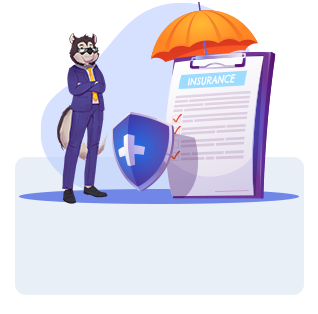There's more than one way to protect yourself with life insurance. Here we explore the 4 main types of cover, how they can help and how much cover you may need.
Pays a lump sum to your beneficiaries or estate in the event of your death or terminal illness. Allows you to pay off any existing debts, cover living expenses for your dependents, or provide the financial support you’d like to give them in your absence. It may be the simplest form of life insurance, but life cover is undoubtedly one of the most important as it helps you provide for your debts and dependents. When you’re looking at life cover, there are 3 key things you need to understand so you know what you’re covered for, and what that means at claim time: How much you’re covered for How your policy will be paid out How your cover is structured – linked or stand-alone.
Did you know? When considering how much to cover to apply for, it’s worth considering how much to replace your income, support your family, educate your children etc.? You can adjust this figure over time as your debts reduce or your children become less financially dependent. That way you’re not paying for cover you no longer need. There's more than one way to protect yourself with life insurance. We will discuss the 4 main types of cover today, how they can help and how much you may need.
Pays you a lump sum if an illness or injury leaves you permanently disabled and unable to work, or perform normal domestic duties if you work in a home-maker role. Allows you to cover out-of-pocket medical expenses, home or transport modifications, support your ongoing financial needs and take care of your dependents. A permanent disability will change what the rest of your life looks like. It can also make life much more expensive in terms of medical care and home modifications – which is why Total and Permanent Disability (TPD) cover is so valuable. When you’re looking at TPD cover, there are 3 key things you need to understand so you know what you’re covered for, and what that means at claim time: How your claim will be assessed – Any or own occupation How long your claim will take – Maximum medical improvement How your cover is structured – Stand-alone or linked.
Did you know? TPD cover may be purchased as a stand-alone policy or as a ‘linked policy’ that’s connected to life cover or trauma cover.
Pays you a lump sum in the event of certain types of serious illness or injury. Allows you to cover the cost of out-of-pocket medical expenses and financially support your lifestyle and family during an extended break for you (and potentially your spouse) from work as you recover. Trauma cover is all about supporting your recovery from a serious illness – helping you afford the treatment of your choice and allowing you to make necessary changes to your lifestyle. When you’re looking at trauma cover, there are 3 key things you need to understand so you know what you’re covered for, and what that means at claim time: What you can claim for – Trauma definitions How your cover is structured – Stand-alone or linked Making multiple claims – Trauma reinstatement
Did you know? A little-known benefit of trauma cover is that you may be able to make multiple claims in your lifetime.
Pays you a monthly benefit to replace part of your income if you are temporarily unable to work as a result of serious illness or injury. Allows you to cover everyday living expenses and maintain the lifestyle you’ve built for yourself and your loved ones. There's not much you can do without an income. In monetary terms, your ability to earn an income is your biggest asset by far - which is why income protection is so important. When you’re protecting your biggest asset, there are 3 things you need to understand so you know what you’re covered for, and what that means at claim time: How much you’re covered for – the sum insured How long you need to wait to be eligible to make a claim – the waiting period How long your claim will be paid for – the benefit period.
Did you know? One great feature of income protection is that premiums are generally tax-deductible, which can make it significantly more cost-effective to get the cover you need. You may also be able to hold an income protection policy inside super, meaning you can use tax-effective super contributions to pay your premiums, however, within a superannuation environment policy feature are generally more restricted.
If you would like to discuss the contents of this article, please call us at 02 7228 3905 or email us at info@angelicinsurance.com.au Please note that at Angelic Insurance, we can only provide you with general information, and do not consider your personal objectives and financial situation. You should consider whether the advice is suitable for you before making the final decision.

October 25, 2022

October 25, 2022

October 25, 2022

We are Australia’s leading risk management and consulting business, working in partnership with Mortgage Brokers in every State and Territory, to protect our local communities whether it be families or their businesses.
Read about our values that drive us everyday